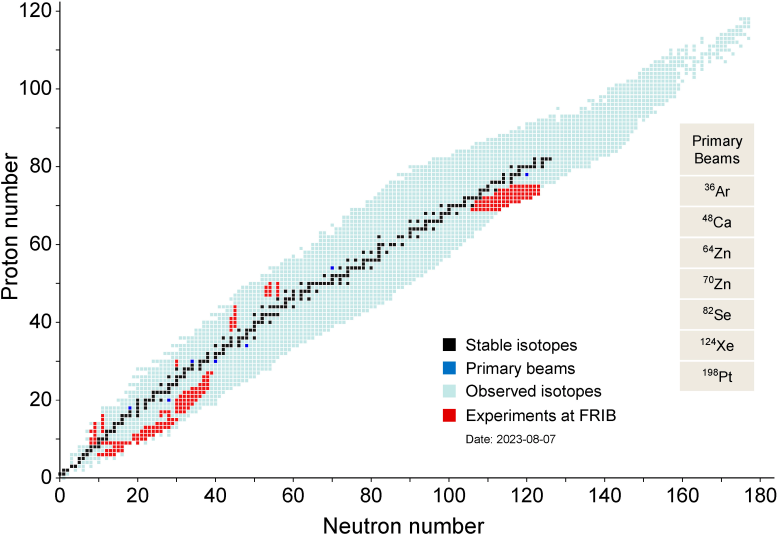By

FRIB, a pioneering nuclear research facility at Michigan State University, has significantly advanced our understanding of atomic nuclei by producing over 210 rare isotopes since its inception in 2022. Its state-of-the-art equipment allows for comprehensive experiments in nuclear physics, contributing to global scientific collaboration and innovation. (Artist’s concept.) Credit: SciTechDaily.com
Department of Energy user facility helps probe questions from changes in the structure of nuclei to nuclear reactions that shape the Universe.
The Facility for Rare Isotope Beams (FRIB) enables discoveries in the science of atomic nuclei, their role in the cosmos, and the fundamental symmetries of nature. This accelerator facility uses beams of short-lived nuclei not available elsewhere. Results from FRIB address questions such as the limits of the nuclear chart, the origin of the elements, and the reason for why there is more matter than antimatter in our Universe.
In FRIB’s first year, its measurements tackled the changes in the structure of the shortest-lived nuclei, exotic decay modes, nuclear reactions that affect cosmic events such as X-ray bursts, and processes in the crusts of neutron stars.
FRIB’s Operational Achievements and Global Reach
FRIB, on the campus of Michigan State University, is the newest scientific user facility for the Department of Energy (DOE) Office of Science, Nuclear Physics program. It has more than 1,800 registered users.
Since the start of operation in May 2022, FRIB has made more than 210 rare isotopes for experiments. FRIB supported 639 participants, including 177 students, across 46 experiments, 180 institutions and companies, and 50 countries. In the future, the wide range of nuclei will also spur new applications. Three articles have already been published from the first FRIB measurement, with many more to come from the later runs.

Isotopes provided for experiments at FRIB. This chart plots all known isotopes based on their nucleon (neutron and proton) composition. Credit: Andreas Stolz (FRIB)
FRIB’s Technological Capabilities and Experimental Innovations
The rare isotopes are produced by fragmentation or fission of stable primary beams at 50% of the speed of light. Ions of any stable element can be accelerated in FRIB’s superconducting radio frequency linear accelerator to at least 200 MeV/nucleon.
Following the collision of the primary beam with a target, the produced rare isotopes of interest are selected with FRIB’s fragment separator and guided to experimental areas where the short-lived nuclei can be either used directly as fast beams for reactions, stopped in detection systems that measure their decays, or slowed down in a gas cell and used in precision experiments after extraction or made into reaccelerated beams of pristine quality with velocities ranging from 2.5% to at least 11% of the speed of light.
The first experiments used the FRIB Decay Station Initiator for decay spectroscopy of the rare isotopes, the GRETINA gamma-ray detection system at the S800 spectrograph for reaction studies, the FRIB fragment separator for new isotope discoveries, and the gas-cell area to purify the beams for decay spectroscopy beyond the proton dripline. This work was performed by collaborations of experimentalists and theorists from around the United States and the world.
References:
“Crossing N=28 Toward the Neutron Drip Line: First Measurement of Half-Lives at FRIB” by H. L. Crawford et al., 14 November 2022, Physical Review Letters.
DOI: 10.1103/PhysRevLett.129.212501
“Microsecond Isomer at the N=20 Island of Shape Inversion Observed at FRIB” by T. J. Gray et al., 13 June 2023, Physical Review Letters.
DOI: 10.1103/PhysRevLett.130.242501
“β decay of Mg36 and Al36: Identification of a β-decaying isomer in Al36” by R. S. Lubna et al., 31 July 2023, Physical Review C.
DOI: 10.1103/PhysRevC.108.014329
This research was supported by the Department of Energy Office of Science, Office of Nuclear Physics.